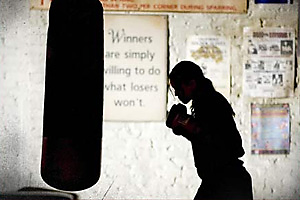Ad Content to Your Site That Leads To Web Conversion
Websites are built to convert your site visitors to prospective customers either through education, brand development or direct sales. With this in mind, a website is really just a sales tool, intended to warm the lead generation process for your sales team, or in some cases, do the work for them. However, the focus in web design often falls on the colors, layout and overall look and feel of the website first, and web conversion second. This could be a recipe for an ineffective website.
To increase your website’s effectiveness and conversion rate, design it in terms of a print ad so that it arrests attention, creates interest, and delivers a compelling enough message to elicit some form of response behavior (call, email, question a past assumption, see something from a different perspective, etc.). This stands true for each and every page on your website. To achieve this goal, you must change your mindset from being satisfied with any content that “fills the page” to focusing on developing persuasive content that motivates visitors to take action by building trust, adding value to their experience or offering what they want. This takes grit, patience, and numerous revisions to get right.
5 Conversion-Driving Content Rules
You don’t have to be a seasoned copywriter to effectively direct the creation of your website’s content. Here are five points to keep in mind while discussing your website’s content strategy, selection, and development.
- Each page needs a headline, including the homepage. A headline should encapsulate the meaning of the page in a sound-bite the reader could easily remember and share.
- The point of the page should be summarized in some pictorial form of communication, whether it be an image, graph, video, chart, etc. At a glance, this visual should convey the purpose of the page and all other content should support it.
- Accentuate the major takeaways on each page. Web readers “skim” pages for the information they seek. Page titles, sub-titles, bullet points, “turn-key” words or phrases need to stand out so these vital page elements tell your story at a glance.
- Include relevant calls to action consistent with the content on each page. Using generic calls to action, or existing calls to action from other pages may be convenient, but this strategy often proves to be ineffective.
- Edit out all content that doesn’t contribute to the end goal so that what remains sells or makes a case for whatever point you are advocating. Less is more.
Headlines: Not Just For Marquis (But They Should Act Like One)
The most effective headlines and body copy “speak” to readers and make a visceral connection between a buyer’s potential needs and your solution from a clear understanding of who you are talking to, empathy, and a customer-centric mindset. Many successful company leaders use this strategy, like Amazon’s CEO, Jeff Bezos. He used to bring an empty chair into staff meetings to represent “the most important person in the room,” a/k/a/ the customer. The empty chair ensured that everyone remained conscious about how their decisions impacted the customer. According to Bezos, “If there is one reason we have done better than our peers in the Internet space … it is because we have focused like a laser on customer experience.”
As content is being created for your website, keep an empty chair or some other reminder in clear view to remain focused on who you are talking to.
“Winners are simply willing to do what losers won’t.”
 Effectively designing, developing and populating your website page is hard work – which is why this critical stage is regularly glossed over. While website traffic is valuable, a website that can’t convince potential customers to take one step closer to doing business with your company is a useless tool in your sales toolbox. Time, resources and effort spent collaborating, creating and fine tuning your website’s content are well worth the investment. If you really want your next website to be the “Million Dollar Baby” that brings visitors closer to being a customer, keep this quote in mind.
Effectively designing, developing and populating your website page is hard work – which is why this critical stage is regularly glossed over. While website traffic is valuable, a website that can’t convince potential customers to take one step closer to doing business with your company is a useless tool in your sales toolbox. Time, resources and effort spent collaborating, creating and fine tuning your website’s content are well worth the investment. If you really want your next website to be the “Million Dollar Baby” that brings visitors closer to being a customer, keep this quote in mind.
“Winners are simply willing to do what losers won’t.”
